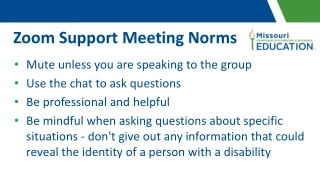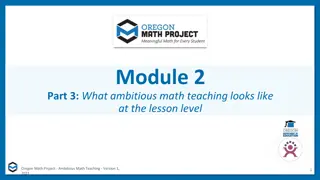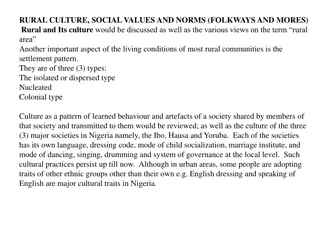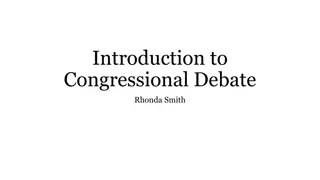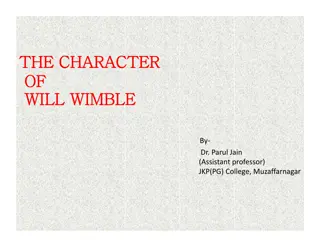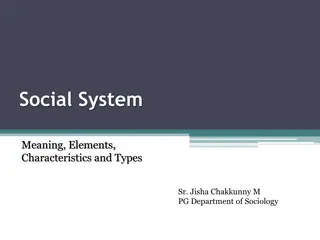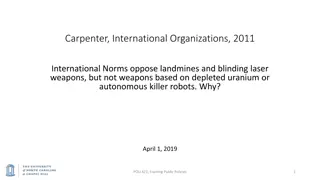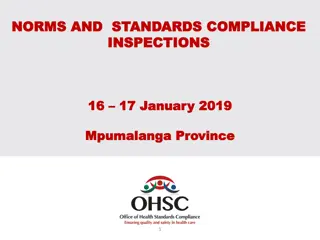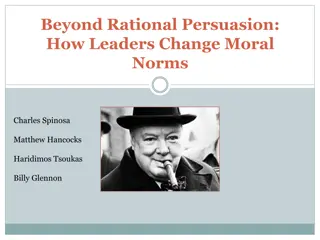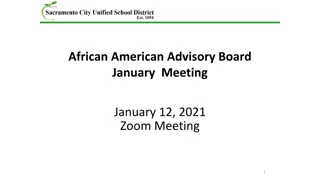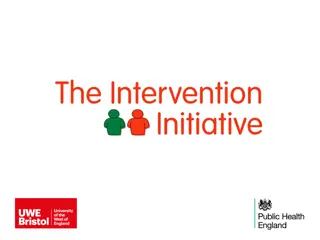
2020 NWEA Norms and Changes
Explore the significance of 2020 NWEA norms, their impact on student performance, and the key changes in the latest data. Delve into how norms provide context and guide instruction for student growth and success.
Download Presentation

Please find below an Image/Link to download the presentation.
The content on the website is provided AS IS for your information and personal use only. It may not be sold, licensed, or shared on other websites without obtaining consent from the author. If you encounter any issues during the download, it is possible that the publisher has removed the file from their server.
You are allowed to download the files provided on this website for personal or commercial use, subject to the condition that they are used lawfully. All files are the property of their respective owners.
The content on the website is provided AS IS for your information and personal use only. It may not be sold, licensed, or shared on other websites without obtaining consent from the author.
E N D
Presentation Transcript
2020 Norms: Whats New & Different? Nate Jensen, Ph.D. Director, Center for School & Student Progress, NWEA
What Resources Are (or Will Be) Available? 2020 MAP Growth Norms Introduction and FAQ 2020 MAP Growth Norms Overview 2020 Norms detail tables 2020 Comparative Data to Inform Instruction one-sheet Norms by Quintile Full Norming Study Updated ASG Calculator
Why Are Norms So Important? A RIT score (or change in RIT score) by itself is meaningless Norms provide one important piece of context, and allow us to answer questions like: How does a student s achievement compare to other students in the same grade and subject area at that term? How much gain might we expect to see between two tests, given a certain set of characteristics? Is my student showing average gains? Above average? Below average? I want my student to be on-track for proficiency at the end of the year how much growth does he need to show, and is that growth goal realistic? Of course, who the norms are based on matters (a lot)
Important Characteristics of NWEA Norms 1.NWEA norms are nationally representative , not just national norms 2.NWEA growth norms adjust for starting achievement level 3.NWEA growth norms adjust for instructional exposure Don t just use generic fall or spring seasons; benefit from the collection of actual calendar information from districts across the country (35%) 4.NWEA norms reflect effortful behavior 5.NWEA norms benefit from a very large sample of students, schools, and test events, and build student growth trajectories based on three years of data, not one 6.NWEA has norms for individual students (student norms) and groups of students (school norms)
2020 Norms Whats Changed? Focal year: 2016-17 (was 2012-13); utilizes data from 15-16 and 17-18 as well Sample size: 3.6M to 5.5M test scores 500K to 700K students 24,500 schools in 5,800 districts across all 50 states No substantive methodological changes to the norms this year Norms will reflect the K-2 scale maintenance work that will also be implemented in July 2020 (more on this later)
2020 Norms Whats Changed? New Grades Addition of new grades to the norms: Achievement: 12th grade mathematics and reading 2nd grade science Growth: 11thand 12thgrade mathematics and reading 11thgrade language usage 2nd, 9th, and 10thgrade science
2020 Norms Whats Changed? New Term Pair New term pair included in the norming study (spring to fall summer loss ) Not currently available in standard reports Study tables and new calculator can help schools contextualize changes in student achievement over the summer months *Mathematics (student growth norms)
2020 Norms Whats Changed? Instructional Weeks Upcoming and proposed changes to the application of instructional weeks in the reporting system Current Instructional Weeks 2-8 16-24 26-36 Coming in August 2020 Scoped for October 2020 0-11 12-24 25-36 0-8 16-24 26-36 Fall Winter Spring
2020 Norms Whats Changed? K-2 Scale Maintenance What: New approach to item calibration & resulting scores on the K-2 MAP Growth assessment Goal: Improve continuity between the MAP Growth K-2 and 2-5 scales Norms: K-2 norms reflect this new approach
How Has Overall Achievement Changed? Difference in RIT scores at Different Achievement Percentile Points 2020 mean minus 2015 READING (DIFF) 2020 Norms Percentile K 1 2 3 4 5 6 7 8 9 10 11 NWEA NWEA NWEA NWEA Median NWEA NWEA Fall Fall Fall Fall Fall Fall -6 -6 -5 -4 -3 -4 -5 -5 -5 -5 -4 -5 -3 -3 -2 -3 -2 -2 0 -1 -1 -1 -2 -3 0 -1 -1 -1 -2 -3 0 0 0 -2 -2 -3 1 1 0 -1 -2 -2 2 1 0 0 -1 -1 3 2 1 1 1 -1 4 2 0 -1 -3 -5 3 2 1 1 1 0 3 2 1 1 1 0 95 84 69 50 31 16 Less extreme than reading, and generally lower achievement overall NWEA Fall -2 -4 -2 -3 -3 -3 -3 -2 -1 -6 -1 -1 7 *Difference based on rounded RIT values MATHEMATICS (DIFF) 2020 Norms Percentile K 1 2 3 4 5 6 7 8 9 10 11 NWEA NWEA NWEA NWEA Median NWEA NWEA Fall Fall Fall Fall Fall Fall -5 -3 -2 0 0 2 -3 -3 -3 -2 -2 -2 -3 -2 -2 -2 -1 -2 -1 -1 -2 -2 -2 -2 -2 -2 -2 -2 -3 -3 -2 -2 -2 -2 -2 -3 -2 -2 -2 -3 -3 -3 -1 -1 -2 -3 -2 -3 0 0 -1 -1 -1 -3 -1 -2 -3 -4 -4 -5 0 -1 -1 -1 -1 -2 0 -1 -1 -1 -1 -2 95 84 69 50 31 16 Achievement went up in the upper grades, and down in the lower grades Differences are most extreme at the upper end of the achievement distribution K-2 differences largely reflect scale maintenance on the K-2 test (meant to improve continuity between K-2 and 2 Difference in 9th grade reflects new approach to estimating high school norms NWEA Fall 3 -3 -1 -2 -4 -3 -4 -3 -3 -7 -2 -3 7 *Difference based on rounded RIT values
How Has Achievement Changed? *Difference in 50th Percentile RIT scores 2020 mean minus 2015 mean Reading 2020 minus 2015 Mathematics 2020 minus 2015 Mid- Year End- Year Begin- Year Begin-Year Mid-Year End-Year Grade K 1 2 3 4 5 6 7 8 9 10 11 Grade K 1 2 3 4 5 6 7 8 9 10 11 -4.4 -4.8 -2.4 -1.7 -1.5 -1.2 -0.8 -0.2 0.8 -1.3 1.1 0.9 -5.0 -5.7 -3.0 -1.7 -1.1 -0.7 -0.4 0.2 1.4 -0.8 1.9 1.9 -5.0 -6.1 -3.1 -1.5 -1.1 -0.8 -0.4 0.2 1.6 -0.5 2.3 2.4 -0.4 -2.4 -1.9 -1.9 -2.4 -2.3 -2.9 -2.4 -1.4 -3.9 -1.0 -1.6 -1.4 -3.6 -2.3 -2.0 -2.6 -2.5 -2.5 -2.1 -1.0 -3.5 -0.3 -0.9 -2.0 -4.4 -2.7 -2.3 -3.0 -2.7 -2.4 -1.9 -0.6 -3.4 0.0 -0.8 Trends in student achievement are consistent with other national measures of student achievement (i.e. NAEP, PISA)
Growth Projections How Have They Changed? *Difference in growth projections between 2020 and 2015 norms Reading 2020 minus 2015 Mathematics 2020 minus 2015 Begin-to- Mid Mid-to- End Begin-to- End Begin-to- Mid Mid-to- End Begin-to- End Grade K 1 2 3 4 5 6 7 8 9 10 11 Grade K 1 2 3 4 5 6 7 8 9 10 11 -0.7 -0.9 -0.7 0.0 0.4 0.4 0.4 0.4 0.6 0.5 0.8 0.0 0.0 -0.4 -0.1 0.2 0.0 -0.1 0.0 0.0 0.2 0.3 0.4 0.0 -0.7 -1.3 -0.8 0.2 0.4 0.4 0.4 0.5 0.9 0.8 1.3 0.0 -0.8 -1.3 -0.5 0.0 -0.3 -0.2 0.4 0.3 0.3 0.2 0.6 0.0 -0.7 -0.8 -0.4 -0.3 -0.3 -0.1 0.1 0.2 0.4 0.2 0.4 0.0 -1.6 -2.1 -0.8 -0.4 -0.6 -0.3 0.4 0.5 0.8 0.5 1.1 0.0
Application of the 2020 Norms - Considerations When there are new norms Partners should apply the newest norms to all data Don t want to have a break in norms Historical reports will automatically reflect this
Application of the 2020 Norms - Considerations And then there s COVID Norms describe what is normal this coming fall will not be normal (nor was the prior spring) Norms can still be useful in the fall to understand how student achievement has changed, but caution is needed (especially when stakes are attached ) Underscores the need to treat fall in many ways as a restart .and focus attention forward instead of backward. Where are kids now, where do they need to go, and how do we help them get there?
Questions? Thank you! Nate Jensen, Ph.D. nate.jensen@nwea.org

